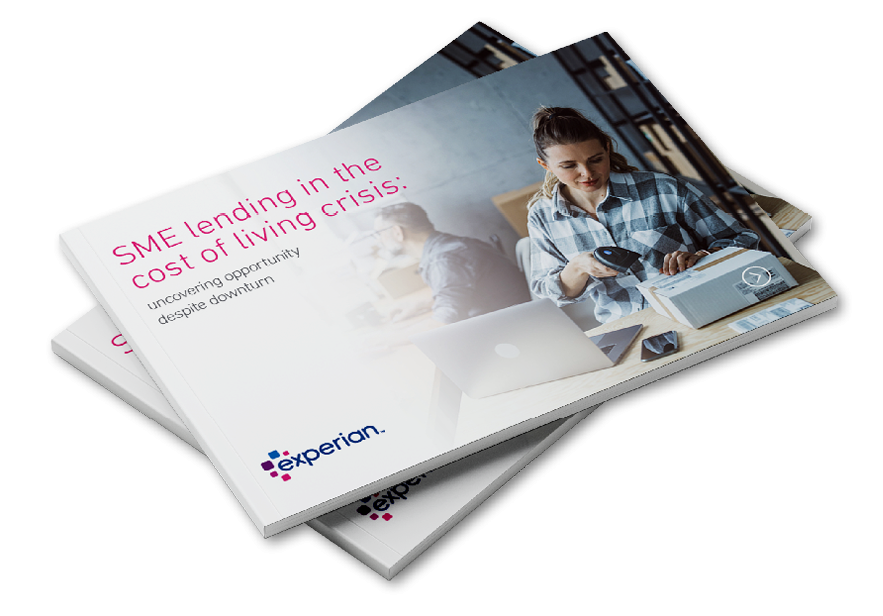In this changeable environment, lenders need the right tools to seize the lending opportunities that undoubtedly still exist
The year ahead is likely to be testing for UK SMEs – and for those who lend to them. The UK economy is headed towards recession. For lenders, this inevitably means increased risk across the entire market, but stress will particularly magnify in certain sectors. But there are also significant opportunities. SMEs with the right profile that are, undoubtedly, excellent prospects for those that can find them.
This paper shows what the state of the SME lending market is today and introduces the tools that will help lenders thrive during the downturn.
Download our paper ‘SME lending in the cost-of-living crisis’ for more insights
Seeing the whole picture – A 4D perspective on SME risk and opportunity
History suggests that lenders who continue to invest during downturns grow more strongly afterwards. How can lenders find the opportunities without over-exposing themselves to risk?
We can provide lenders with four key categories of data. Each of these data points captures something different about the health of a business.
#1 Credit Risk
An established measure - Commercial Delphi helps identify those businesses more likely to fail over the next 12 months based on a complex blend of current and historic data assets.
#3 Growth
Measure of growth potential - 30% of UK SMEs fall into the highest growth bands (A-C). The typical company in these bands is more established (5+ years old).
#2 Survivability
Measure of the life expectancy of the business - Experian's SME Survivability score shows that 11% of UK SMEs will likely fail in the next year, increasing to 16% over the next three years.
#4 Affordability
Measure of a business's ability to afford further lending - With it not being mandatory for all small limited companies to file profit and loss figures, the use of core bureau data to assess their capacity to take on further debt is paramount in determining whether to approve additional financing.
In this white paper, we cover:

The volume and value of lending to SMEs
Remain 6.5% below pre-pandemic levels
The delinquency rate on business lending
This is above 2019 levels on most products, but has been stable throughout 2022
Part of the reason for SME resilience
There is evidence that companies have been able to pass on, rather than absorb, increasing costs
Experian's SME Survivability score
11% of UK SMEs will likely fail in the next year, increasing to 16% over the next three years
A sneak peek into...
SME lending in the cost-of-living crisis
Introduction
The year ahead is likely to be testing for UK SMEs – and for those who lend to them. The UK economy is headed towards recession. For lenders, this inevitably means increased risk across the entire market, but stress will particularly magnify in certain sectors. But there are also significant opportunities. SMEs with the right profile that are, undoubtedly, excellent prospects for those that can find them.
There are still genuine opportunities to lend profitably and successfully to UK SMEs. After all, they have shown remarkable resilience in the face of four years of headwinds.
As the pandemic hit, many predicted a meltdown in the SME credit market. This has not happened and following the pandemic years of 2020 and 2021, the SME credit market is recovering.
Did you enjoy the read?
Download the full white paper
What we see is a complex picture. It is a concern that in some sectors more businesses are struggling to meet repayments than in past years. But some sectors present significantly more risk than others. And there are still excellent, strong businesses that will provide value to smart lenders with the tools to identify them, even in sectors that may otherwise be showing signs of stress.










